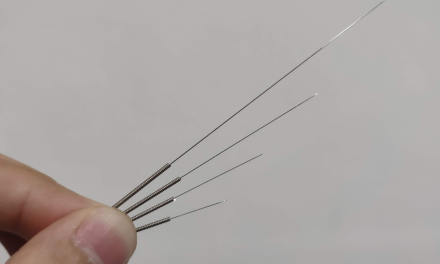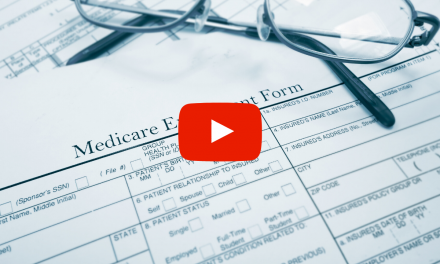
To Lien or Not to Lien

These past few months, the phones at the ICS and my office have been ringing off the hook with calls regarding Liens. Questions asked ranged from how to, to when and even why. Now, this article is not here to criticize anyone, but to reacquaint those that need to be refreshed and simple for those that just don’t know. So, let’s buckle our seatbelts and begin………
A lien is usually a formal document signed by the party to whom money is owed and sometimes by the debtor who agrees to the amount due. These liens may include the contractor’s lien, mechanical lien, but what interests’ healthcare is the medical lien.
A medical lien is for medical bills to be paid from funds recovered for an injury. Failure of submitting liens will negate your office from receiving any funds whatsoever. Although, many claim that notary is not essential in placing a lien, but from my experience with attorneys, it is best to have them notarized. In other words, present your liens to a notary, usually your banker, and have your signature notarized. Yes, I realize that there are those that submit liens where the attorney is to sign off on them and return them to the office via mail acknowledging the lien. Well, let me tell you, the majority of attorneys simply laugh at them and fail to sign them because they are aware that the lien is the only one that was sent, and simply toss them. If you use them, just be aware of the possible consequences of their utilization.
For a lien to be accepted by all parties, it must be perfected. Perfected liens are those liens for which a creditor has taken the steps required by law to give third parties notice of his/her interest in the property in which a lien is claimed. Perfection of a lien also requires all necessary acts of pre-condition, which typically includes proper and timely notice of service of the lien and to include the date of the incident.
Therefore, all involved are served and must include the following:
- Plaintiff (patient)
- Defendant(s)
- Insurance Company (include claim number)
- The attorney (Plaintiff)
- If needed, all others that were involved must be liened, as well.
- Such as a 3rd auto, its driver, etc.
Some doctors believe that the MedPay should be liened as well. Though it is not a standard operating procedure to do so, many still do it. Submitting or not submitting a lien to MedPay has no effect in the liens being perfected. Let me repeat this, submitting or not submitting a lien to MedPay has no effect in the liens being perfected.
To enact a lien, a health care professional or provider must serve written notice via certified mail with return receipt to the injured person as well as the party against whom the claim exists. This will provide you with proof of acceptance of the liens in question by all parties involved. If you receive an envelope was sent that one of the parties in question did not accept, then staple that envelope to the file and do not open it. In the event of Adjudication of your lien where the patient’s attorney informs the Judge that your lien is not perfected due to all parties not receiving your liens, then you present the Judge the unopened envelope showing the attempt of delivery.
Now, once a claim has been settled and damages awarded, the injured person or his/her representative must give notice to any lienholder who served notice.
On June 30, 2003, the new Health Care Services Lien Act was signed into law. The new legislation repealed the eight former Lien Acts for medical providers. The new Act uses only two health care classifications: professionals such as physicians and providers such as hospitals and clinics.
The most drastic change includes the distribution of settlement funds. In prior Lien Acts, each lien type was entitled to collect 1/3 of the settlement. How? Well, let’s say that the patient went to the Emergency Room, and then went to your office. Because of the 1/3 rule, the attorney receives 1/3, the patient receives 1/3, your office receives 1/3 and the Hospital receives 1/3. I know we live in an era of “new math,” but this was ridiculous in settlements. Hence, the new Health Care Services Act.
The new law allows all lienholders, regardless of which class you fall in, to collect proportionately up to 40% of the total amount of the injured person’s settlement, judgment or award. If the total amount of health care liens exceeds 40% of the settlement, all health care professionals must share up to 20% and all health care providers must share up to 20%. Unused portions of the 40% are then reallocated to either the professionals (physician) or providers (hospital), but no professional or provider may receive more than 1/3 of the settlement.
If the total amount of the liens meet or exceed 40% of the settlement, the attorney’s lien must be reduced to 30%. For the cynics, yes Virginia there is a Santa Clause, this is where the attorney must reduce his/her settlement fee. However, there does exist attorneys who, regardless of the 2003 Health Care Services Act, will reduce their fee so that the patient and professional can receive an increase in settlement funds. I personally know an attorney who for the last 22 years has done this and continues to serve his clients in this manner when needed. So doctors, keep the faith.
However, the new Act does not apply should the attorney file an appeal in the matter.
Health care professionals and providers continue to have the right to file a petition in court to ensure their respective rights and to enforce payment on the related liens.
If the health care professional or provider is unable to collect his/her full fee, the Act does not prohibit pursuing a claim against the injured person for the remainder of the fees –balance billing. Unless a written or verbal agreement is made between your patient’s attorney and your office regarding the acceptance of the settlement fund as payment in full, your office must consider it as a partial payment. In the same token, many of you have received checks from the respective attorney which represented less than what was owed and deposited the aforementioned check. Your office bills the patient, and you receive a phone call from the attorney regarding the depositing of this check and mentions that you accepted the check as full and final payment. You proceed to argue that you never agreed to the payment as full and final payment until he mentions that your signature on the back of the check and/or depositing of the check is accepted as full and final payment. Guess what, the attorney is correct. Therefore, please read the front and back of the check prior to its deposit, as well as the letter that the check came with and make your decision.
We at the ICS are not here to change your office policies or how you handle any billing of your patients or even the nature of your involvement with your patient’s attorney. We are trying to present you with a generalized manner of understanding Liens, its effects and even effects on a case. We, the ICS and myself, are here to serve its members in Personal Injury and Workers’ Compensation matters, if you, the member, still need further lien clarification do not hesitate in contacting us. If you are not a member, please contact the Illinois Chiropractic Society at (217) 525-1200.
Lastly, a lien does not exist for any Workers’ Compensation or Occupational Disease.



















